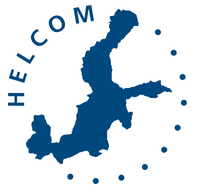Best measures to monitor and assess underwater noise and marine litter in the Baltic Sea, and especially the development of indicators, were discussed in Oslo during the 3-day of HELCOM Monitoring and Assessment Group () ending yesterday. Noise and litter have damaging impacts on marine ecosystems and immediate attention is needed to define suitable mitigation measures, as well as follow-up on the effectiveness of actions. The long-running MONAS Group consists of representatives from all the Baltic coastal countries, from the fields of research and policy-making alike. A dedicated thematic session at the meeting focused, among others, on planning the way forward for the development of indicators for underwater noise, which may be used for monitoring ambient and impulsive underwater noise in the Baltic Sea. Human-introduced noise from e.g. wind farm construction and shipping is increasing. Such sounds, highly challenging to measure and manage, may have a significant negative impact on animals in a number of ways, on both individual and population levels. Moreover, another session at the MONAS meeting considered latest research initiatives and available information on sources and amounts of marine litter in the Baltic Sea as well as existing methods for monitoring. The session provided inputs towards development of a Regional Action Plan for marine litter by 2015. The Action Plan has the aim to significantly reduce marine litter by 2025. Marine litter from land and sea-based sources, with a dominance of plastics of different sizes ranging from macro- to microparticles, causes harmful impacts not only on habitats and species, but also on various economic sectors, such as fisheries, shipping or tourism. The agenda of the MONAS meeting, which started on Tuesday, has otherwise focused on the extensive revision of the HELCOM monitoring programmes; the development and operationalization of core indicators; and planning of the execution of a second holistic assessment. he Meeting was chaired by HELCOM MONAS Chair Ms. Anna-Stiina Heiskanen, Finland. Note for editors:The Monitoring and Assessment Group () looks after one of HELCOM’s key tasks by assessing trends in threats to the marine environment, their impacts, the resulting state of the marine environment, and the effectiveness of adopted measures. This work forms the basis for the work of HELCOM’s other main groups, and helps to define the need for additional measures. The Baltic Marine Environment Protection Commission, usually referred to as , is an intergovernmental organisation of the nine Baltic Sea coastal countries and the European Union working to protect the marine environment of the Baltic Sea from all sources of pollution and to ensure safety of navigation in the region. Since 1974, HELCOM has been the governing body of the ‘Convention on the Protection of the Marine Environment of the Baltic Sea Area’, more commonly known as the Helsinki Convention. For more information, please contact:Ulla Li Zweifel Professional Secretary – GEAR, HABITAT & MONASHELCOM Tel. +358 46 850 9198 Skype: helcom64E-mail: ullali.zweifel(@)helcom.fiJohanna Laurila Information Secretary HELCOM Tel: +358 40 523 8988 E-mail: johanna.laurila(@)helcom.fi
Best measures to monitor and assess underwater noise and marine litter in the Baltic Sea, especially developing indicators, were discussed in MONAS Meeting.
